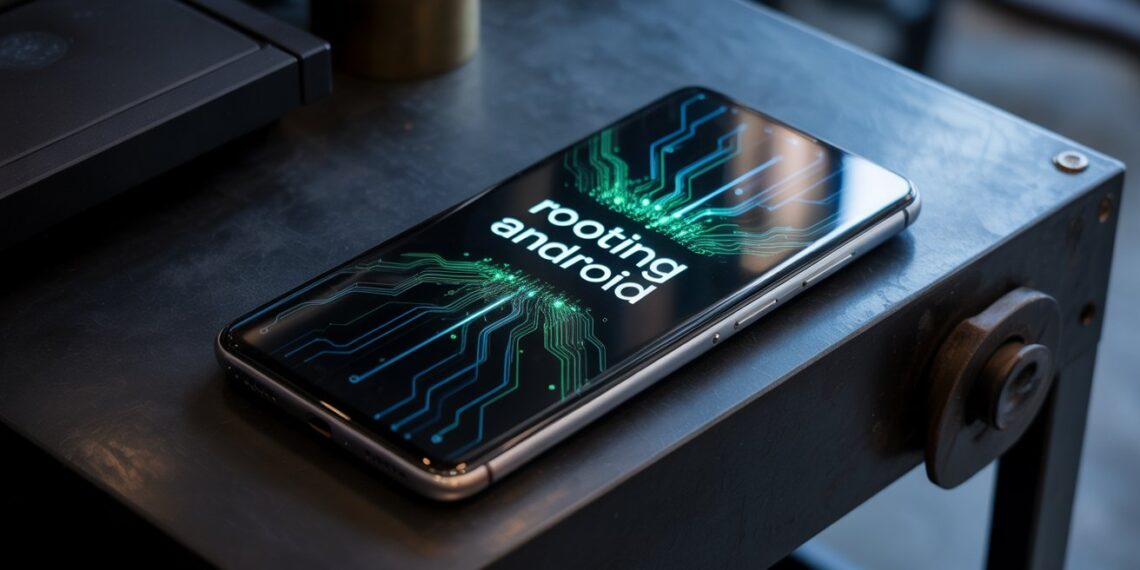Rooting an Android phone means gaining administrator-level (root) access to the operating system allowing you to modify, delete, or customize system files that are normally restricted. It’s essentially unlocking full control of your device, similar to having “superuser” permissions in Linux.
In 2025, rooting remains a powerful but risky process. While it enables deep customization, improved performance, and the ability to install custom ROMs, it also raises security, warranty, and compatibility concerns especially as Android’s built-in security ecosystem has grown stronger with Android 15 and Google Play Protect updates.
Why Is It Called “Rooting”?
The term “root” comes from the Unix/Linux architecture, where the “root user” has unrestricted access to all system files and processes. Android, being based on Linux, inherits this structure.
When you buy a phone, the manufacturer provides you with limited (“guest”) access to prevent accidental damage or tampering. Rooting elevates your privileges to the superuser level, giving you control over every element of your phone’s software but also the power to break it if misused.
Rooting in 2025: How It Works and Why It’s Less Common
In earlier Android versions, rooting was popular for removing bloatware or installing custom ROMs like LineageOS or Pixel Experience. But as of 2025, Google and major brands (Samsung, OnePlus, Xiaomi, etc.) have made rooting less necessary by offering features like:
-
Built-in battery optimizers and app control tools.
-
Customization options via Material You and Android Theming Engine.
-
Regular feature drops that add functionality once only available through custom ROMs.
That said, rooting is still used by advanced users, developers, and modding enthusiasts who want system-level control, kernel tweaks, or privacy modifications beyond Google’s ecosystem.
Expert Insight: According to the 2025 Android Developers Forum, less than 3% of users still root their phones primarily for performance testing, software development, or using tools like Magisk for systemless modifications.
Does Rooting Void Your Warranty in 2025?
In most cases, yes rooting voids your manufacturer’s warranty.
When you unlock the bootloader (a required step to root), the system triggers a tamper flag or eFuse, which permanently logs the modification. Manufacturers can detect this during service and may deny warranty claims, especially for software-related or security issues.
However, there are some exceptions:
Brand |
Rooting Policy (2025) |
Can You Reverse It? |
|---|---|---|
Samsung |
Rooting triggers Knox security fuse; warranty is void permanently. |
❌ No |
OnePlus |
Allows bootloader unlocks; warranty void only if damage caused by rooting. |
✅ Yes |
Xiaomi |
Unlock via official tool; warranty void depending on region. |
⚠️ Sometimes |
Google Pixel |
Unlockable but not recommended; security updates may fail. |
✅ Partially reversible |
Pro Tip: If your phone develops a hardware issue unrelated to software modification, unrooting (flashing official firmware) before repair may allow warranty service though traces can remain in system logs.
Advantages of Rooting an Android Phone
Rooting gives you full system access, enabling advanced customization and performance tuning. When done carefully, it can extend device longevity and usability.
Top Benefits (as of 2025):
-
Full Control: Modify kernel parameters for CPU/GPU performance and battery optimization.
-
Bloatware Removal: Delete pre-installed carrier or manufacturer apps.
-
Deep Customization: Install custom ROMs, themes, and launchers beyond stock options.
-
Advanced Tools: Use root-only apps like Titanium Backup, Greenify, or Tasker Pro.
-
Extended Updates: Install unofficial Android 15/16 builds on older phones.
-
Privacy Mods: Block telemetry and ads system-wide using hosts files or Magisk modules.
Disadvantages and Risks of Rooting
Despite the power it provides, rooting comes with serious risks both technical and security-related.
Risk |
Description |
Level |
|---|---|---|
Bricking |
Device fails to boot due to corrupted firmware. |
High |
Warranty Void |
Permanent in most cases. |
High |
Security Vulnerabilities |
Root access can be exploited by malware. |
Medium-High |
App Incompatibility |
Banking and streaming apps (Google Wallet, Netflix) may refuse to run. |
Medium |
OTA Update Failure |
Automatic system updates no longer work. |
Medium |
Expert Comment: Google Play Protect now scans for “root management tools” like Magisk and flags them as potential security risks. This doesn’t always mean malware but it can reduce app compatibility and update reliability.
Rooting vs. Alternatives (2025 Comparison)
Option |
Description |
Pros |
Cons |
|---|---|---|---|
Rooting |
Full system control and modification |
Total freedom, advanced tweaks |
Warranty void, risk of bricking |
Developer Mode |
Advanced settings for debugging/testing |
Safe and reversible |
Limited customization |
ADB Commands |
Command-line tweaks without root |
Useful for power users |
Partial access only |
Custom Launchers & Theming |
Change appearance only |
Visual customization |
No system control |
FAQs (People Also Ask)
1. Is rooting still worth it in 2025?
For most users, no. Modern Android versions already offer deep customization, battery optimization, and security. Rooting is best for developers or advanced users.
2. Can you unroot a phone after rooting?
Yes, by flashing the official firmware or using Magisk’s “Uninstall” option but traces may remain in system logs.
3. Does rooting improve performance?
It can, if you overclock your CPU or remove bloatware but it may reduce stability and battery life if misconfigured.
4. Is rooting illegal?
No, rooting isn’t illegal in most countries (including the U.S., U.K., and India), but it voids warranties and violates some app security policies.
Expert Takeaway: Root Responsibly
Rooting in 2025 remains a powerful tool for those who understand the risks and benefits. However, with Android’s evolving privacy and security standards, the need to root has decreased sharply.
If you decide to proceed:
-
Back up all your data first.
-
Use trusted tools (e.g., Magisk, Odin).
-
Verify model compatibility and guides from reputable XDA Developers threads.









